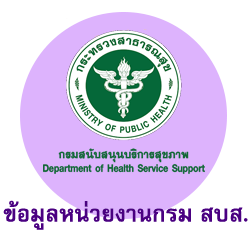Development of the screening forms for pregnant women with high risk pregnancy in the Buriram Health Service Network
Keywords:
Development, Pregnant women screening, High risk pregnancyAbstract
High risk pregnancy causes the mother and fetus to be dangerous or have a higher risk of death, including during pregnancy, birth, and postpartum period. Incidence of perinatal mortality in Buriram Province in 2012-2015, cause of death found that the risk factors and complications of mothers are the cause. Caused by not being screened for risk or late diagnosis, resulting in the lack of initial treatment. This research is an action research. The purposes of this study were to developing of new screening forms for pregnant women with high risk pregnancy, study the effect of screening developed on satisfaction for the accuracy, completeness, clarity and ease of use. The four stages of the research were 1) Prepare and analyze the situation, create a screening form for pregnant women and guidelines 2) Training and take the screening form and guidelines to try out 3) Evaluate 4) Apply the results of the analysis to improve. Selected samples were purposive and stratified sampling according to the proportion of the hospital. The sample consisted of 1,054 pregnant women, 21 provincial auditor, and 307 health workers from the community hospitals and district health promotion hospitals in Buriram Province. The study period was from October 2016 to September 2018. The research tools consisted of 2 parts. 1) The tools used in the study were (1) The screening forms for pregnant women (2) The Guidelines for Screening and Referral for high risk pregnancy. 2) The tools used to collect data were: (1) Mother and Child Health Book (2) The questionnaire of satisfaction. The validity of the content was approved by five experts. The content validity index of the screening forms for pregnant women and the Guidelines for Screening and Referral for high risk pregnancy was 0.98 and 0.89. The satisfaction questionnaire was tested by Cronbach’s alpha method was 0.94. The data were analyzed by using percentage, mean, standard deviation, Paired t-test, and Chi-square test.
The study found that: The screening forms was composed of four elements: 1) Historical background and family history. 2) History of pregnancy. 3) Physical examination in this pregnancy. 4) Laboratory. There are 43 questions. The risk level is divided into 3 levels and forwarded according to the potential of each hospital. The consistency in the risk screening and referral for the diagnosis of the provincial auditor, there were no statistically significant differences. The Provincial Auditor and health workers have the overall satisfaction score on the screening protocols developed was high levels. In conclusion, this study has resulted in good results in both the satisfaction of the provincial auditor and the health workers. The health workers can assess the risk in accordance with the provincial auditor. The screening test should be used to screen in every network. It is possible to find pregnant women at high risk pregnancy. And forward to the appropriate diagnosis and treatment according to the potential service. The screening test can prevent possible harm to pregnant women and fetus.
References
Amsuwan, Ladda. Isaranurak, Sirikun. Chanwitan, Prasin. Techasena, Waraporn. Suthan Sumitra. and Suphapinyo, Chanyayuth. (2003). Death and perinatal mortality True from the surveillance of pregnant women and newborns, a long-term research project in Thai children. Health Systems Research Institute Thailand Research Fund Ministry of Public Health.
Best, John. (1970). Research in education. Englewood Cilifts, New Jersy : Printice-Hall.
Bloom, Benjamin S. (1956). Taxonomy of Education Objective Handbook I : Cognitive. New York: David Mackey Company, Inc.
Health Information Group. (2016). Health Statistics Year 2016. Nonthaburi: Strategic and Planning Division.
Kaewsribut, Nonglak. Chamnan, Nataya. Mekam, Nipaporn. Phatmeesuk, Natcha. and Phaeng, Jitlada. (2018). Development of screening methods for the transmission of pulmonary tuberculosis. Health personnel Outpatient service and emergency accident patient service Mancha Khiri Hospital. 6 September 2018 from file: /// C: / Users / vipsu6 / Downloads / R2R. TB% 20 screening (Essence)% 20 (2)% 20 (1).pdf
Kemmis, S & McTaggart, R. (1988). The Action Research Planer (3rd ed.). Victoria : Deakin University.
Phueng Ubon, Benja. (2007). Infant mortality situation in health promotion hospitals Health Center 4, Ratchaburi, Budget Year 2002-2007. 28 September 2018, from . pdf
Udomkitti, Suwit. (2011) High risk factors of pregnant women with perinatal mortality. Phra Nakhon Si Ayutthaya Hospital. The Association of Preventive Medicine, 1(1), 98-108.
Uthaisrattanakit, Daranee. Srisukvatananan, Pawinee. Ngamsamut, Nattawat. Saengsawang, Thapana. and Wangwisesgusol, Chanikarn. (2013). The Identification, Screening, and Diagnosis for Parson with Attention Deficit Hyperactivity Disorder, and Learning Disorders, and Pervassive Developmental Disorders/Autism. Kasetsart University.
Von Bertalanffy, L. (1956). General System Theory: General Systems. Yearbook of the Society for the Advancement of General System Theory. 1: 1-10
Worakot, Supisara. Thungimma, Phongsri. Srina, Nantana. and Theerasopon, Pranee. (2011). Screening of primary anemia in reproductive women by Chan Phen Sub-district Public Health Volunteer, Tao Ngoi District, Sakonnakhon Province. Journal of Nursing and Education, 4 (2), 2-9.
Yamane, Taro. (1975). Statistic : An Introductory analysis. (3rd ed.). Tokyo : Harper International edition.
Downloads
Published
How to Cite
Issue
Section
License
Copyright (c) 2019 Journal of Department of Health Service Support-วารสารวิชาการกรมสนับสนุนบริการสุขภาพ

This work is licensed under a Creative Commons Attribution-NonCommercial-NoDerivatives 4.0 International License.



